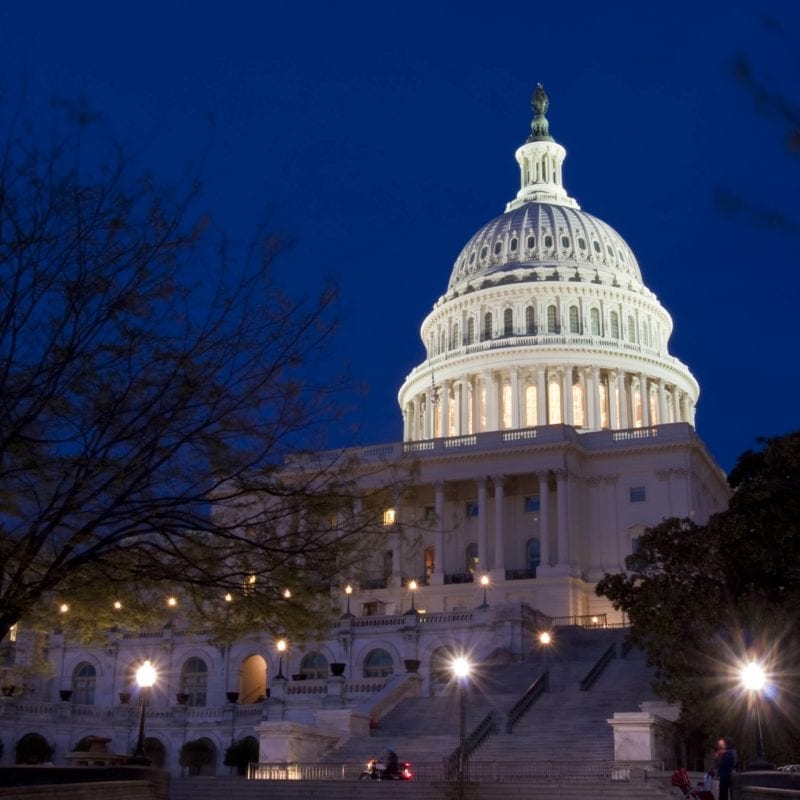
Managing Stress & Anxiety Once the Election is Called
Once the election is called, there is bound to be a lot of emotion, whether it is joy, relief, panic, or devastation. Joy and relief are wonderful emotions that largely enable us to refocus on our dharma and daily routines. It is important to be intentional in how we process emotions to ensure that distraction doesn’t take us away from dharma. As discussed above, avoiding gloating to family and friends may take intentional effort to maintain the relationships. Despair may take more work to process, and it may be more difficult to accept the results. Understanding what action we can take, and what acceptance we need to practice, can be helpful to moving forward.
- Action: Meditation, puja, and grounding activities can all help regulate immense emotions around loss. While our brains may be telling us that we feel unsafe, it’s important to remember our physical bodies are actually safe.
- Taking concrete action by engaging in self-care is essential; our bodies need to be able to regulate properly to think clearly and calmly about what we want to do in light of the election result. This is key to the process of acceptance.
- In a related vein, it may be important to manage the information we are taking in at this time. We may need to turn off the news, set strict social media timers, and ask for breaks from political conversations with friends and family while we actively work towards helping our physical body regulate intense emotions.
- Peaceful protest is another concrete action to feel community with those who are also feeling the same, intense emotions. It can be both comforting and invigorating to feel the power of the number of people who are engaged in finding ways to push against policies and decisions that we find alarming. There are dharmic and adharmic ways to protest, and we must engage in soothing our physical bodies in order to understand the difference.
- Acceptance: Once the results are formally announced, we will have to practice radical acceptance, and we owe it to our brains and bodies to avoid the cognitive traps of taking personal responsibility for changing the result.
- We may feel guilt, regret, and shame around whether we could have “done more” to achieve the result we wanted. While reflection can be an important learning experience for how we think about future local, state, and federal elections, if we ruminate or become paralyzed with regret, we won’t grow.
- Practice acceptance, extend grace, and know that we have control over a significant portion of our lives. Acceptance of the result does not mean that we cannot engage politically in order to address systemic and political challenges we face, but rather that we will be most effective when we can own the idea of detaching from the intense emotion of the moment to find clarity in seeing what our dharma is in this moment.
- Continue to focus on using grounding exercises like yoga, breathing exercises, puja, and meditation to mitigate the physiological symptoms of stress including but not limited to increased heart rate, difficulty breathing, profuse sweating, muscle aches (including headaches), nausea, and other symptoms of indigestion, and difficulty sleeping. Deep, diaphragmatic breathing can be very helpful with many of these symptoms.
- If you find that it’s still difficult to manage, speaking to your primary care provider, seeking medication, or talking to a therapist can be helpful. Overall, therapy can also be an effective space to work with a licensed professional to gain skills to cope with difficult emotions and understand the difference between what can be acted upon and what must be accepted. See HAF’s Mental Health Guide for additional information on different types of professional mental health providers.
Dealing With Close Family and Friends Who Don’t Align Politically
It can be frustrating when someone you know well and love has a completely different political perspective from yours. This section is intended to help address political differences in otherwise positive, functional healthy relationships with very loving, close family and friends.

Family members with diametrically opposite political viewpoints
A Hindu worldview can be a huge asset as we grapple with all the emotions of an election. Hinduism pushes us to accept the world in all of its nuance and conflict, to rise above our most base tendencies to make things a rigid binary and to instead accept holistically. Our loved ones have many sides to them, and being able to hold the parts of them that make us feel loved with the parts that we feel hurt by is challenging, yet it is also an opportunity to grow spiritually, ethically, and empathetically.
While it can be incredibly jarring to feel that someone you know well and love has a completely different worldview than you, it’s important to see your loved one holistically; they are still the person who has shown you love, affection, and demonstrated that they’re a decent, compassionate person in many, many interactions. This is a confusing moment, and your brain may be tempted to split them into “like” and “dislike” parts and decide that given the pain of the “dislike”, it’s better to discard all of them. If they’re someone you’ve benefited from being close to prior to this election, you have a lot to lose if you take the “easy” knee-jerk path of cutting off close, otherwise healthy relationships.
One metaphor that’s been meaningful in appreciating how a loved one can see the world in such starkly different ways is the viral Blue/Black or White/Gold dress debate. It was incredibly baffling to realize that even sight, in many ways the most concrete of our senses, differed based on how our brains are wired! While there’s a great deal more emotional weight to the election than the color of a dress, there’s power in being able to lean into accepting that we will see and value things very differently based on the differences in our experiences, our contexts, and simply, our brains.
*Note* If you are in an unhealthy or abusive relationship, prioritize your safety and seek professional help.
Why Cutting Close Friends and Family Off Isn’t Necessarily The Best Course of Action
We’re living in a time where we receive a lot of messages about putting up strong boundaries and even cutting off those we disagree with to protect our personal safety, but this mindset cuts us off from our potential to see the world and those that inhabit it in their full, complicated glory. It’s important to recognize that the call to hold our loved ones holistically, to engage instead of shut out, is not meant to minimize nor invalidate the pain we feel. Instead, the hope is to give ourselves permission to hold our pain with our love, and to honor all parts of the close relationship. The expression of our pain, rooted in fear that our loved ones’ lack of attunement to our perspective will lead to further erosion of our safety and security, is deeply important. Accepting our loved ones where they are does not mean minimizing who we are and what we’re feeling; it means doing the hard work to figure out how we can support each other’s safety, despite our differences and fears.
While it’s true that every person’s vote has an impact on us, it’s also true that the impact our loved ones have on us is more complicated and layered than their vote alone. The ways in which we assess our safety, particularly with close, healthy relationships, are important. If we paint ourselves as vulnerable rather than capable, we risk stunting our own growth.
*Note* if you are in an unhealthy, abusive relationship, then it is absolutely the time to take firm means to protect your safety.
How to Constructively Engage Family and Friends Who Politically Disagree

Caption: two close Hindu friends constructively engaging in difficult conversation
Below are constructive ways to effectively express our pain and fears to our loved ones while also creating meaningful dialogue about our perspectives.
Set Some Rules
While simply avoiding talking about politics entirely with loved ones is an option, this path can lead to festering emotions and a sense of feeling unheard by both parties. Similar to cutting people off, this approach is not ideal. Instead, consider setting rules that can help set you up to have a constructive conversation.
- When and where: have a frank conversation about what times and settings need to be off limits for political disagreements. Respect each other’s requests, even if you feel differently about what is ideal for you. You may love discussing things over morning chai, but if your loved one doesn’t appreciate that timing, you’re both set up for conflict. It’s also a good idea to avoid sending posts in a family or group chat if there’s a history of conflict.
- Avoid disrespect: whether via eye-rolling, name-calling (of your family member OR their candidate), yelling, storming out, or gloating.
- If these collaboratively set rules are repeatedly broken, then the balance may shift to making it more reasonable to avoid conversations entirely.
Engage With Curiosity
This is probably the most difficult of the tips to practice, and yet it’s the most important
- If you and your loved one have set up the space for a conversation, enter with as much curiosity as you can, rather than the intention of changing their perspective. You love your loved one, and trying to understand what is driving their worldview by asking open-ended questions will help you understand them more deeply. Curiosity is catching, and if you come in with respect and openness to understanding their perspective, they will likely return the respect and curiosity, giving you both a chance to understand one another in new, nuanced ways.
Find Common Ground
- If you need a goal for the conversation, try to make it to find as much common ground as you can. You find what you’re looking for, and this will help you practice the curious open mindset that sets you both up to have a productive conversation.
Lead With Feeling
In calling for the attempt to hold your loved one holistically, the opportunity to exert influence on your loved one isn’t lost. If you’re set up for an honest and respectful conversation, there are some pointers that can help you feel heard, understood, and possibly even agreed with.
-
- Don’t lead with facts
- While it may seem helpful to lead the conversation with facts, facts can inflame the conversation quickly because they’re easy to disagree with, easily manipulated, and even push us to use our smartphones to make our argument for us.
- Start the conversation by sharing your emotions.
- While we can disagree with facts easily, it would be quite silly to look at our crying loved one and say, “No, you’re not sad.”
- Our emotions are designed to pull each other into our relationship and to enhance our empathy. When we can establish the safety to express our emotions vulnerably, we gain an opportunity to express ourselves. Being able to state things like “I feel unsafe” or “I am worried about my autonomy” is really important as we peel past more surface-level conversations about policy to discuss the root of why it feels so painful to disagree politically with those we love.
- Try to keep the goal to listening and sharing, seeing and being seen.
- Your loved one’s vote is crucial to building the world you want to live in, but they also represent far more to you than simply their ballot.
- Yes, this is a contradiction, but it’s one we’re capable of holding to be our full, multifaceted selves that accept our full, multifaceted loved ones.
- As we are seen and heard, it becomes easier to see that it’s not our loved ones who are literally attacking our safety; in fact, they may be sources of strength and resilience, even in a moment of political disagreement, if we allow them to be so.
- Share stories
- Stories and relations of experiences are particularly effective at helping us explain why a particular policy or decision is frightening to us and how we feel it affects us.
- Know when to wrap things up.
- If you notice you’re getting emotionally and physically escalated, you are unlikely to make meaningful, cogent arguments, and you’re more likely to say something you’ll regret. Walk away, and practice the tools of acceptance.
- Don’t lead with facts
Examples of how best to engage constructively and tips for avoiding unconstructive pitfalls in emotionally heated political conversations:
DO Ask Questions Like
“What appeals to you about this policy?” or “What is your priority in this election?”
- When it’s time to share your perspective, try sharing stories like “I read a story about a person in __ who experienced ___ and it filled me with despair. I fear I could find myself in a similar situation, and I feel sadness for everyone who is in this situation.”
DO NOT Ask Slanted or Closed Questions Like
“Why don’t you care about my safety?”Don’t try to lorde the moral high ground or use disrespectful, assumptive language like “So all you care about is ___ but I actually care about what’s right.”
Managing Anxiety During Post-Election Uncertainty
If the election takes multiple days to be called, we need to be prepared to manage the particular anxiety that comes with a mental state of uncertainty Even after the election is called, it could be weeks or even months of recounts, lawsuits, and court cases. This will require us to practice acceptance of being unable to control a result and the fear the result could change. While acceptance in a state of uncertainty can be difficult psychologically, there are tools to help manage.
Action: We can still take steps to protect our well-being, even if we are in a state of waiting, unable to influence the result. We can be intentional in our social media use, think clearly about boundaries we may need when engaging in conversations about the emotions of others, and practice grounding activities to cope with any physical symptoms of stress.
Acceptance: It is particularly difficult to accept that which is uncertain, but yoga, breathing exercises, puja, and meditation are still important tools for achieving a mental state of acceptance.
Managing Anxiety Before The Election
Our brains have been evolutionarily programmed to believe more action is always in our power. While action is often the best path for things within our control, anxiety can creep in when we try to control things beyond our control. Telling the difference between when action or acceptance is needed is hard, but as election day approaches, it’s important to shift more mental resources into acceptance mode. Overriding survival instincts from another time is challenging, so give yourself grace and remember to treat yourself as a friend rather than an adversary.

Caption: Man on laptop is feeling despair about the upcoming election
Action
- Vote. Voting matters and this is the ultimate way to influence the outcome you want. Taking action is a concrete way to channel our anxiety, and it’s important to take actions that are in our control to influence the outcome we wish for. Other concrete actions to take around the election include:
- Join initiatives to turn out the vote
- Volunteer as a poll observer
- It can sometimes feel like no amount of action within our control is enough. Before leaning into adharmic actions (like wanting to set ballot boxes on fire), consider the need for the following step: Acceptance.
Acceptance
- Anxiety is our brain’s attempt to convince us to try and control something we fundamentally cannot. One of the most effective ways of coping with anxiety is practicing acceptance. Acceptance does not mean that you approve of the candidate your loved one is rooting for or the outcome of the election; instead, acceptance is an acknowledgment of the reality of the differences, including the pain and fears you hold, rather than fixating on trying to change what is causing you suffering, which can leave you stuck in a dark, difficult place.
- Hinduism teaches us to understand that, while we must do our dharma at every turn, our health and happiness lie in being able to detach from the fruit of our actions. We must practice acceptance of that which is not in our control, and let it go.
- Grounding exercises like yoga, breathing exercises, and meditation are all effective ways of mitigating the physiological symptoms of stress.
- Puja is a particularly wonderful grounding activity as it invites us to use all of our senses to center ourselves in the present moment, away from the shame and regret of the past or the anxiety of the future.
- Therapy can also be an effective space to work with a licensed professional to gain skills to cope with difficult emotions.
-
- See HAF’s Mental Health Guide for additional information on different types of professional mental health providers.








































